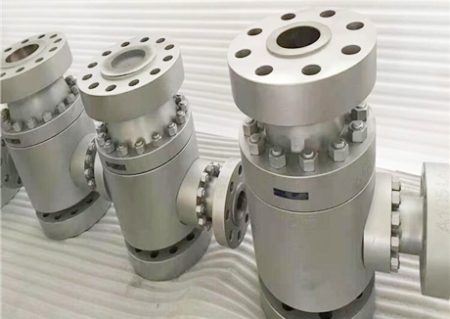
You need to pick an automatic recirculation valve that fits your pump’s minimum flow. Make sure it matches the size and what your system needs. Always check if your system uses a butterfly valve, ball valve, electric valve, pneumatic valve, or a pneumatic control valve. Each type changes how the valve works. The right valve keeps your pumps safe. It helps your system work well. It also saves you money.
Many places say they get these benefits after using the right valve:
- Lower installation costs, sometimes only one-third of control valve systems
- Instant pump protection with no extra setup needed
- No maintenance needed for long-term steady use
Key Takeaways
- Pick an automatic recirculation valve that fits your pump’s minimum flow. This helps keep your system safe and working well.
- Learn about the types of valves like butterfly, ball, electric, and pneumatic. Each type can change how your system works.
- Check and take care of your valve often. This stops leaks and keeps things running smoothly. It also saves money on repairs.
- Choose the right valve size for your pump’s flow rate and pressure. This stops energy waste and keeps your equipment safe.
- Think about what the valve is made of. Match it to the liquid in your system. This stops rust and helps the valve last longer.
- Talk to experts to make sure you pick the best valve. This helps you avoid mistakes when choosing and installing valves.
- Look at all costs, like installation and upkeep. This helps you make a smart money choice.
- Use a step-by-step plan to check what your system needs. Gather facts and match valve features for the best results.
Automatic Recirculation Valve Basics
What Is an Automatic Recirculation Valve
You use an automatic recirculation valve to protect your pump from damage. This device combines all the parts of a typical bypass system into one unit. It has a flow-sensitive check valve disc that moves based on how much liquid your system needs. When you install this valve, it makes sure your pump always gets enough flow. This helps prevent problems like overheating or cavitation, which can ruin your pump.
How It Works
The automatic recirculation valve keeps your pump safe by watching the flow in your system. If the flow stays above a safe level, the valve lets liquid pass through the main line. When the flow drops, the valve reacts right away. It opens a bypass path and sends some or all of the liquid back to the pump. This action keeps the pump running with the right amount of flow.
Tip: You do not need to adjust the valve yourself. The automatic recirculation valve senses changes and works on its own.
Here is a simple breakdown of how the valve works:
- The valve senses the flow rate in the main pipeline.
- If the flow is high enough, it allows liquid to move forward.
- If the flow drops, it redirects liquid back to the pump to keep it safe.
Core Functions
The automatic recirculation valve does three main things for your pump system:
| Mechanism | Description |
|---|---|
| Flow Sensing | The valve detects the flow rate in the main pipeline. |
| Bypass Operation | When flow drops below a set level, the valve redirects flow back to the pump’s inlet. |
| Overheating Prevention | The valve makes sure the pump does not run dry, stopping overheating and cavitation. |
You can count on this valve to:
- Maintain a minimum flow rate for your pump.
- Automatically redirect flow when the main flow drops.
- Prevent overheating and cavitation.
When you use an automatic recirculation valve, you make your pump system safer and more reliable. You also reduce the risk of expensive repairs.
Advantages of an Automatic Recirculation Valve
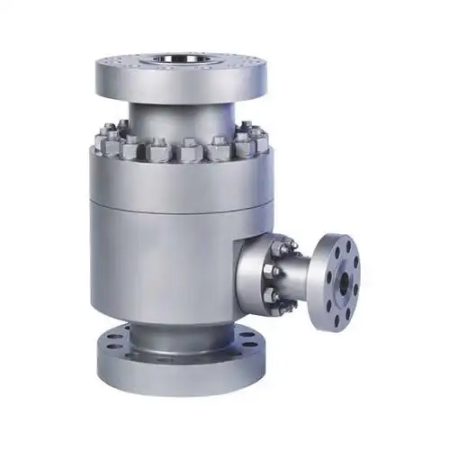
Pump Protection
You want your pump to last a long time. An automatic recirculation valve helps protect your pump. It keeps the flow safe, so your pump does not run dry. The valve stops overheating and cavitation. Cavitation can hurt the pump’s parts and make it work worse. Using this valve helps your pump work better. It also helps you avoid sudden problems.
Here is a table that lists the main advantages of an automatic recirculation valve in pump systems:
| Advantage | Description |
|---|---|
| Reliability | Your system works well and stays strong. |
| Low Maintenance | The valve needs little care, saving you time and money. |
| Energy Efficiency | Your system uses less energy, so you pay less for power. |
| Protection Against Cavitation | The valve protects your pump from damage caused by bubbles in the liquid. |
| Overheating Protection | It keeps the pump cool by making sure enough liquid always flows. |
| Quick Amortization | You can get your money back in about a year compared to older solutions. |
Note: Automatic recirculation valves help more than just pump protection. They also give you better reliability and lower costs.
System Efficiency
You want your system to use energy well. With an automatic recirculation valve, your pump only works when needed. The valve sends liquid back to the pump when it is needed. This smart control can save almost 90% of electric energy compared to pumps that run all the time. You also use less energy to heat water—about one-third less. These savings help your system work better.
- You waste less energy.
- You pay less each month.
- Your pump lasts longer because it does not work too hard.
Reduced Maintenance
You do not want to spend time or money fixing your pump system. The automatic recirculation valve helps you avoid many common problems. Older valves often needed repairs every year because of leaks or worn parts. With the new design, you see fewer leaks and less damage. You do not need to replace parts as often. This means less downtime and lower costs.
- You fix or replace parts less often.
- You avoid expensive repairs.
- Your system runs smoothly for a longer time.
When you look at all these points, the benefits of an automatic recirculation valve are clear. You get pump protection, better efficiency, and less maintenance. Your whole system works better and costs less to run.
Pumps and ARV Compatibility
Pump Types
You need to know which pumps work best with an automatic recirculation valve. Most centrifugal pumps benefit from this valve. These pumps often need a steady flow to avoid damage. If you use a multistage pump, you also need to keep a minimum flow. The valve helps you do this by sending extra liquid back through the recirculation line. Some positive displacement pumps do not need a recirculation line because they handle low flow better. Always check your pump’s manual to see if it needs a recirculation line for protection.
Tip: If you use a vertical or horizontal centrifugal pump, you will likely need a recirculation line and an automatic recirculation valve.
Performance Curves
You should look at the performance curve for your pump. This curve shows how your pump works at different flow rates and pressures. Pumps with steep curves respond well to changes in flow. These pumps work better with a recirculation line and an automatic recirculation valve. If your pump has a flat curve, it may not react quickly to changes. This can make it harder for the valve to protect your pump. You want to match the valve to a pump that shows clear changes in flow and pressure on its curve.
| Pump Curve Type | Best for ARV? | Why? |
|---|---|---|
| Steep Curve | Yes | Easy to control with recirculation |
| Flat Curve | No | Harder to protect with ARV |
Note: Always check the pump curve before you choose a recirculation line and valve.
Application Fit
You must make sure the automatic recirculation valve fits your system. Start by checking the size of your recirculation line. The line must handle the flow needed to protect your pump. Next, look at the pressure in your system. The valve and recirculation line must work at the same pressure as your pumps. You also need to think about the liquid you move. Some liquids need special materials for the valve and recirculation line. If you use hot water, chemicals, or thick liquids, choose a valve that matches these needs.
- Check the size of your recirculation line.
- Match the valve to your pump’s pressure.
- Pick the right material for your liquid.
If you follow these steps, you will find a good fit for your pumps and recirculation line. This helps your system run safely and last longer.
Key Selection Factors
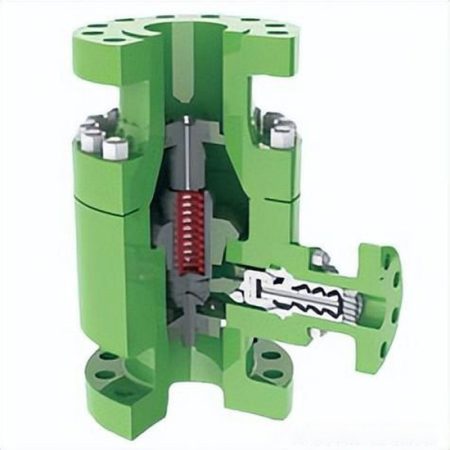
Minimum Flow Requirement
You need to know the minimum flow your pump needs to stay safe. If the flow drops too low, your pump can overheat or get damaged. The automatic recirculation valve helps by making sure your pump always gets enough liquid, even when the main line flow is low. You should check your pump’s manual or ask the manufacturer for the correct minimum flow value.
Here is a table that shows what you should consider when setting the minimum flow:
| Key Factor | Description |
|---|---|
| Working Principle | The valve adjusts the bypass flow based on the main channel flow rate. |
| Installation Requirements | Place the valve close to the pump outlet, within 1.5 meters, in either vertical or horizontal position. |
| Maintenance Precautions | Check for dirt and make sure the sealing surface stays clean and tight. |
| Advantages | The valve works by itself, saves energy, lowers installation costs, and needs little maintenance. |
| Protection of Pump | Keeps your pump running safely at low flow with just one valve. |
Tip: Always install the valve as close to the pump as possible. This setup gives the best protection.
Sizing the Valve
You must size the valve to match your pump and system. If the valve is too small, it will not let enough flow through. If it is too big, you may waste energy or cause other problems. Start by knowing the flow rate and pressure your pump needs. Use the data from your pump’s performance curve. The right size valve will keep your pump safe and your system running well.
- Measure the normal and minimum flow rates.
- Check the pipe size and match it to the valve.
- Make sure the valve can handle the highest pressure in your system.
If you size the valve correctly, you help your pumps last longer and avoid costly repairs.
Bypass Flow
Bypass flow is the amount of liquid the valve sends back to the pump when the main flow drops. You need to set this flow to match your pump’s minimum flow requirement. If the bypass flow is too low, your pump may run dry. If it is too high, you waste energy. The automatic recirculation valve adjusts the bypass flow automatically, but you must set it up for your system.
- Set the bypass flow to match the minimum flow your pump needs.
- Make sure the bypass line is the right size and material for your liquid.
- Check the bypass flow during system startup and after any changes.
Note: Regular checks help you keep the bypass flow at the right level and protect your pumps.
Pressure Ratings
You need to check the pressure ratings before you choose an automatic recirculation valve. Each valve has a maximum pressure it can handle. If your system pressure goes above this limit, the valve may fail. You want to match the valve’s pressure rating to the highest pressure your pumps can reach. This step keeps your pump safe and helps your system run smoothly.
Start by looking at your pump’s data sheet. Find the highest pressure your pump can create during normal operation. Add a safety margin to this number. This margin protects your system from sudden spikes. For example, if your pump runs at 10 bar, you might pick a valve rated for 12 or 15 bar.
Tip: Always choose a valve with a pressure rating higher than your system’s normal working pressure.
Here is a quick checklist for pressure ratings:
- Check the maximum pressure of your pumps.
- Add a safety margin to the pressure.
- Choose a valve with a higher pressure rating than your system needs.
- Make sure the valve can handle pressure changes during start-up and shutdown.
If you follow these steps, you help prevent leaks and damage. Your pump and system will last longer.
Material Selection
You must pick the right material for your automatic recirculation valve. The liquid in your system can affect the valve’s life. Some liquids cause rust or corrosion. Others may wear down the valve parts. You want a valve that matches the liquid your pumps move.
Common valve materials include stainless steel, carbon steel, and special alloys. Stainless steel works well with water and many chemicals. Carbon steel costs less but may not last as long with harsh liquids. Special alloys resist strong acids or high temperatures.
| Material | Best For | Not Good For |
|---|---|---|
| Stainless Steel | Water, mild chemicals | Strong acids |
| Carbon Steel | Clean water | Corrosive liquids |
| Special Alloys | Acids, hot liquids | High cost systems |
Note: Always check the liquid type and temperature before you choose the valve material.
If you pick the right material, your pumps and valves will work better and last longer.
System Compatibility
You need to make sure the automatic recirculation valve fits your whole system. The valve must match the size of your pipes and the flow your pumps provide. It should also work with other equipment, like sensors or control systems.
Check the connection type on your pipes. Some systems use flanges, while others use threads or welds. The valve must fit these connections. You also want to check the space around the pump. Some valves need more room for installation or maintenance.
Here are some points to check for system compatibility:
- Match the valve size to your pipe size.
- Make sure the valve fits the connection type.
- Check if the valve works with your control system.
- Leave enough space for easy installation and service.
If you follow these steps, your pump system will run without problems. You will also find it easier to maintain your pumps and valves in the future.
How to Choose the Right ARV Valve
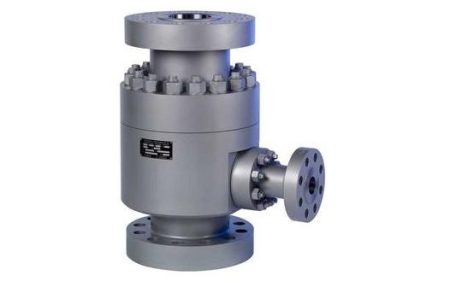
Assess System Needs
You need to start by understanding your pump system. This step helps you avoid mistakes later. Begin with a walk-down of your system. Look at every part and see how it works together. Check the pipes, pumps, and valves. Notice if anything looks worn or out of place.
Next, collect data about how your system runs. Write down how much energy your pumps use. Track the operating costs over time. This information gives you a clear picture of your system’s normal operation.
You should also analyze how well your system performs. Look at the pressure gauges and other instruments. Find out if there are any weak spots or places where the flow drops. This process helps you spot problems before they get worse.
Here is a simple list to guide you:
- Walk through your system and check the setup.
- Collect data on energy use and costs.
- Analyze performance using gauges and instruments.
Tip: Take notes during your walk-down. These notes help you remember details when you choose your valve.
Gather Data
You need good data to make the right choice. Start by finding the minimum flow your pump needs. This number keeps your pump safe. Check the pump manual or ask the manufacturer if you are not sure.
Measure the normal flow and pressure in your system. Use flow meters and pressure gauges for this step. Write down the highest and lowest values you see. This information helps you pick a valve that fits your needs.
You should also record the type of liquid your system moves. Some liquids need special valve materials. Note the temperature and if the liquid is clean or dirty. These details matter when you select your automatic recirculation valve.
- Minimum pump flow
- Normal and peak flow rates
- System pressure range
- Liquid type and temperature
Note: Accurate data makes it easier to find the best valve for your system.
Match ARV Features
Now you can match the features of the valve to your system. Look for a valve that meets your minimum flow and pressure needs. Make sure the valve fits your pipe size and connection type. Check if the valve material works with your liquid.
Some valves have extra features. You might want a valve that works with your control system. Some valves have sensors or alarms for added safety. Choose features that help your system run better and last longer.
Here is a table to help you compare features:
| Feature | What to Check |
|---|---|
| Flow Range | Matches your minimum and peak flows |
| Pressure Rating | Handles your system’s highest pressure |
| Material | Resists corrosion and wear |
| Connection Type | Fits your pipes |
| Extra Functions | Sensors, alarms, or automation |
Remember: The right features protect your pump and make your system more reliable.
If you follow these steps, you will know how to choose the right arv valve for your pump system. You will protect your equipment and improve efficiency.
Consult Experts
You may feel confident after gathering data and matching ARV features. Still, you should talk to experts before making your final choice. Experts can help you avoid mistakes that cost time and money. They know about the latest valve technology and common problems in pump systems.
You can find experts in several places:
- Valve manufacturers
- Pump suppliers
- Engineering consultants
- Experienced maintenance staff
When you speak with an expert, bring all your system data. Show them your pump’s minimum flow, pressure ratings, and the type of liquid you use. Ask them to review your choices and suggest improvements.
Tip: Prepare a list of questions before you meet with an expert. This helps you get the most useful advice.
Here are some questions you might ask:
- Does this ARV fit my pump’s minimum flow and pressure?
- Is the valve material right for my liquid?
- Will this valve work with my control system?
- Are there any new ARV models that offer better performance?
- What are the most common installation mistakes?
Experts can also help you with installation tips. They may know about local codes or special requirements for your industry. You can avoid costly errors by listening to their advice.
If you have a complex system, you should ask for a site visit. An expert can spot problems that are hard to see on paper. They can also train your team on how to use and maintain the new valve.
Note: Even if you feel sure about your choice, a second opinion from an expert can save you from expensive repairs later.
Evaluate Cost and Performance
You want to choose a valve that fits your budget and works well. Do not pick the cheapest valve without checking its quality. A low-cost valve may fail early and cause pump damage. You should look at both the price and the long-term value.
Start by comparing the total cost of each valve. This includes:
- Purchase price
- Installation costs
- Maintenance needs
- Energy use over time
You can use a simple table to compare your options:
| Valve Model | Purchase Price | Install Cost | Maintenance | Energy Use | Total Cost (5 Years) |
|---|---|---|---|---|---|
| Model A | $800 | $200 | Low | Low | $1,500 |
| Model B | $600 | $250 | Medium | Medium | $1,800 |
| Model C | $1,000 | $180 | Very Low | Very Low | $1,400 |
Alert: The lowest purchase price does not always mean the lowest total cost.
You should also check the valve’s performance. Look for these signs:
- The valve keeps the pump safe at all times.
- The valve works well with your system’s flow and pressure.
- The valve lasts many years with little maintenance.
Ask for performance data from the manufacturer. You can request test results or case studies. These show how the valve works in real systems.
You should also think about future needs. If your system may change, pick a valve that can handle higher flows or pressures. This helps you avoid buying a new valve later.
Tip: A good ARV protects your pump, saves energy, and reduces downtime. This makes your whole system more reliable and cost-effective.
If you balance cost and performance, you will make a smart choice. Your pump system will run better, and you will spend less money over time.
Checklist for ARV Selection
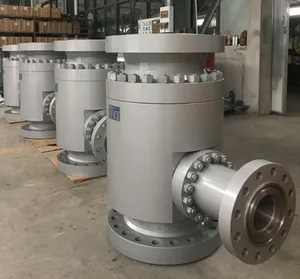
Essential Questions
You need to ask the right questions before you choose an automatic recirculation valve. These questions help you avoid problems and make sure your pump system works well.
- What are the true process conditions?
- Find out the minimum and maximum flow your pump needs.
- Check the real pressures before and after the valve.
- Know the lowest and highest temperatures your system will see.
- Identify the type of liquid in your system.
- How does the valve respond when installed?
- Make sure the valve gives a steady, linear response.
- Think about how changes in pressure affect the valve.
- Could cavitation, flashing, or choked flow happen?
- Learn the vapor pressure and critical pressure of your liquid.
- Watch for signs of bubbles or flow problems.
- How do you size and select the valve?
- Use tools or programs from the valve maker to check your numbers.
- Calculate the right Cv (flow coefficient) for both low and high flows.
- Is the valve body and seal material right for your fluid?
- Pick materials that last with your liquid and temperature.
- Make sure seals will not wear out too fast.
Tip: Write down your answers. This record helps you compare different valves and makes your final choice easier.
Decision Framework
You can use a simple framework to guide your decision. This step-by-step process keeps you on track.
| Step | What to Do | Why It Matters |
|---|---|---|
| 1 | Gather all system data | You need facts to make a good choice |
| 2 | Check minimum and maximum flow and pressure | Protects your pump from damage |
| 3 | Calculate required Cv for your flows | Ensures the valve fits your needs |
| 4 | Select valve body and trim for linear response | Gives you smooth, reliable control |
| 5 | Match valve material to your process fluid | Prevents leaks and early failure |
| 6 | Review with a trusted expert or supplier | Catches mistakes before you buy |
Note: Following each step helps you avoid missing important details.
Common Mistakes
Many people make the same errors when picking a valve. You can avoid these problems if you know what to watch for.
- Choosing a valve that is too large or too small for your system. This mistake can cause poor performance or waste energy.
- Ignoring the need for the right valve trim. The wrong trim can lead to leaks or early wear.
- Forgetting to check if the valve material matches your liquid. Some fluids can damage the valve if you pick the wrong material.
- Not thinking about long-term reliability. A quick choice now can lead to costly repairs later.
- Skipping expert advice. You might miss new options or better solutions.
Alert: Take your time and double-check your work. Careful selection saves money and keeps your system safe.
Installation and Maintenance
Proper Installation
You need to install the automatic recirculation valve correctly to protect your pump and keep your system running well. Place the valve on the pump discharge, just like you would with a standard check valve. During start-up, the bypass stays fully open. This setup lets the minimum flow recirculate and keeps your pump safe. As your process needs more flow, the valve slowly closes the bypass. When the main flow goes above the minimum, the bypass shuts, and all the liquid moves to your process.
Follow these steps for a smooth installation:
- Check the valve and all parts for damage before you start.
- Clean the pipe and remove any dirt or debris.
- Align the valve with the flow direction marked on its body.
- Tighten all bolts evenly to avoid leaks.
- Test the system at low flow to make sure the bypass works.
Tip: Always follow the manufacturer’s instructions for installation. This helps you avoid early problems and keeps your pumps safe.
Routine Inspection
You should check your automatic recirculation valve often to keep it working well. Do not wait for a set time. Instead, look at the valve’s condition and how your system runs. Here are some important maintenance tips for arv valves:
- Inspect for leaks around the valve body and connections.
- Look for signs of damage or wear on the valve and actuator.
- Test the actuator to make sure it moves smoothly.
- Listen for strange noises during operation.
If you find any problems, fix them right away. Quick action can stop bigger issues and keep your pump system safe.
Note: Routine inspection helps you spot small problems before they turn into big repairs.
Troubleshooting
Sometimes, you may notice your system is not working as it should. If you see low flow, leaks, or strange noises, you need to troubleshoot the automatic recirculation valve. Start by checking the valve for blockages or stuck parts. Make sure the actuator works and the bypass opens and closes at the right times.
Use this table to help you find and fix common issues:
| Problem | Possible Cause | What to Do |
|---|---|---|
| Low flow | Blocked bypass | Clean the bypass line |
| Leaks | Loose bolts/seals | Tighten or replace seals |
| Noisy operation | Worn parts | Inspect and replace parts |
| Valve not moving | Faulty actuator | Test or replace actuator |
If you cannot solve the problem, contact a valve expert or the manufacturer for help.
Good installation and regular checks keep your system safe and reliable. You will spend less time on repairs and more time with your pump running smoothly.
Picking the right automatic recirculation valve means you need to match the bypass flow to what your pump needs. You should check the pressure in your system. You also need to choose the right materials for your fluid and temperature. If you size the valve correctly and make sure it fits your system, your pump will last longer and work better. Here is a table that explains why these steps matter:
| Key Point | Explanation |
|---|---|
| Valve Sizing | Helps keep your pump safe and stops expensive problems. |
| Energy Efficiency | Cuts down wasted energy and saves you money. |
| MTBF Improvement | Makes your pump last longer and need fewer repairs. |
Doing regular maintenance stops overheating and damage. Follow the checklist and ask experts for help with tricky systems. The right valve keeps your equipment safe and makes your system more reliable. ??
FAQ
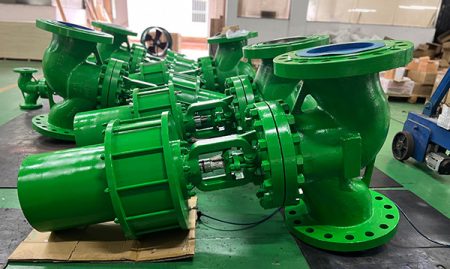
What does an automatic recirculation valve do?
You use an automatic recirculation valve to protect your pump. It keeps the flow above a safe level. The valve sends liquid back to the pump when the main flow drops.
How do I know which size valve to choose?
You check your pump’s minimum and normal flow rates. You match the valve size to your pipe size and system pressure. Ask your pump supplier for help if you are not sure.
Can I install the valve myself?
You can install the valve if you follow the manufacturer’s instructions. Clean the pipes, align the valve, and tighten bolts evenly. If you feel unsure, ask an expert for help.
What happens if I pick the wrong valve material?
You risk leaks, rust, or early valve failure. Always match the valve material to your liquid and temperature. Stainless steel works for water. Special alloys resist acids and heat.
How often should I check my automatic recirculation valve?
You should inspect the valve every few months. Look for leaks, wear, or strange noises. Fix problems right away to keep your pump safe.
Do automatic recirculation valves save energy?
You save energy because the valve only lets your pump run when needed. This reduces wasted power and lowers your monthly bills.
What are common mistakes when choosing an ARV?
You might pick the wrong size, ignore material needs, or skip expert advice. Always check your pump’s flow, pressure, and liquid type before you buy.
Tip: Write down your pump data before you shop for a valve. This helps you make the best choice.
Can I use an ARV with any pump?
You use ARVs mostly with centrifugal pumps. Some positive displacement pumps do not need them. Always check your pump manual to see if an ARV fits your system.
